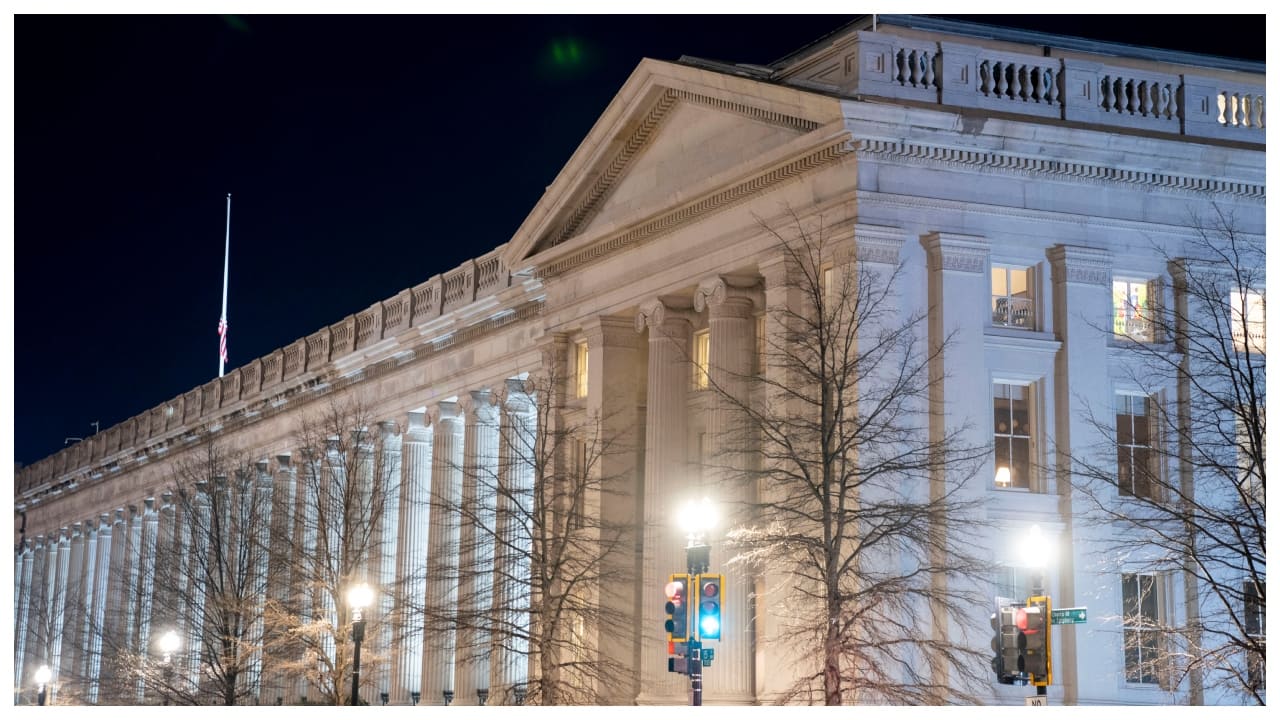Investors keen for early insight into whether China and other foreign governments remain eager to keep buying US Treasuries are turning to this week’s slew of bond auctions. In addition to bills, the US Treasury is selling $183 billion in two-, five- and seven-year notes — the first sales for some tenors popular with overseas buyers since President Donald Trump announced reciprocal tariffs that upended global trade earlier this month. Scrutiny will be particularly strong on the results of the $70 billion five-year auction on Wednesday because over 60% of foreigners’ holdings are concentrated at that maturity or less, according to the latest data from the Treasury and Federal Reserve.
A sale of seven-year notes follows on Thursday. The auctions are a “litmus test” of foreign appetite for US debt amid Trump’s trade war, according to Gareth Berry, a strategist at Macquarie Group Ltd. in Singapore.

There has been speculation China, the second-largest foreign holder and a key target of Trump’s tariffs, may abstain from buying more debt as a retaliation tactic. “The size of the indirect bid in this week’s Treasury auctions should be a big focus,” said Berry. “Foreign official holdings are tilted towards the front-end, so the fact that we have five and seven year note sales coming up means this would be an important indicator of global interest.
” Treasuries rallied in early Asia trading Wednesday with the benchmark 10-year yield falling 5 basis points to 4.35% and the 5-year equivalent slipping one basis point to 3.99%.
President Donald Trump said he has no intention of firing Federal Reserve Chair Jerome Powell, dialing back rhetoric which triggered broad market volatility earlier in the week. In the first of the week’s Treasuries auctions on Tuesday, indirect bidders — the category that includes foreign central banks bidding through the Fed — took 56.2%, their lowest share in two years.
Dealers were left holding 13.7% of the $69 billion-worth of new two-year notes, more than the average of 11.6% for the previous six offerings.
However direct bidders — typically large investors that circumvent dealers — won 30.1%, among the highest shares on record in data since 2004. For Martin Whetton, head of financial markets strategy at Westpac Banking Corp.
, the “sweet zone” for overseas buyers is the five-to-seven year part of the US curve, which provides a clearer litmus test for foreign appetite. “I just don’t think China would turn up to buy, as would Asia,” he said. “The US has just given them reasons not to.
” A share of indirect bidders in 5-year auction sales stood at 75.8% at the last offering on March 26, close to a record high according to data compiled by Bloomberg going back to May 2003. Conversely, the equivalent gauge for 7-year debt slid to 61.
2% on March 27, the lowest since 2022. What Bloomberg strategists say ..
. Treasury futures may drift sideways in Asia as investors focus more on equity rebounds and adjusting dollar positioning, but the downside beckons once US markets return later today with a 5-year auction to come after a weak two-year sale on Tuesday. “The five-year in particular tends to reflect reserve manager appetite — short enough for liquidity, long enough to carry,” said Billy Leung, an investment strategist at Global X.
“If demand is weak, it might raise broader questions about global confidence in the US fiscal path.” Yields on two-year Treasuries remain below this year’s peak level of 4.42% reached in early January.
Investors have driven short-term Treasury yields lower anticipating that the Trump administration’s tariffs agenda will hurt US economic growth later in the year. The picture for longer-dated securities has been more mixed. In light of solid demand for recent 10-, and 30—year auctions, “so far concerns of less foreign buying hasn’t appeared yet,” said George Catrambone head of fixed income, DWS Americas.
“We can’t ignore the fact that 25% of Treasuries are held by foreign entities or persons,” he said. “So when I see dollar weakness I don’t think the US can go at it completely alone without foreign participation in Treasury auctions.”.
















